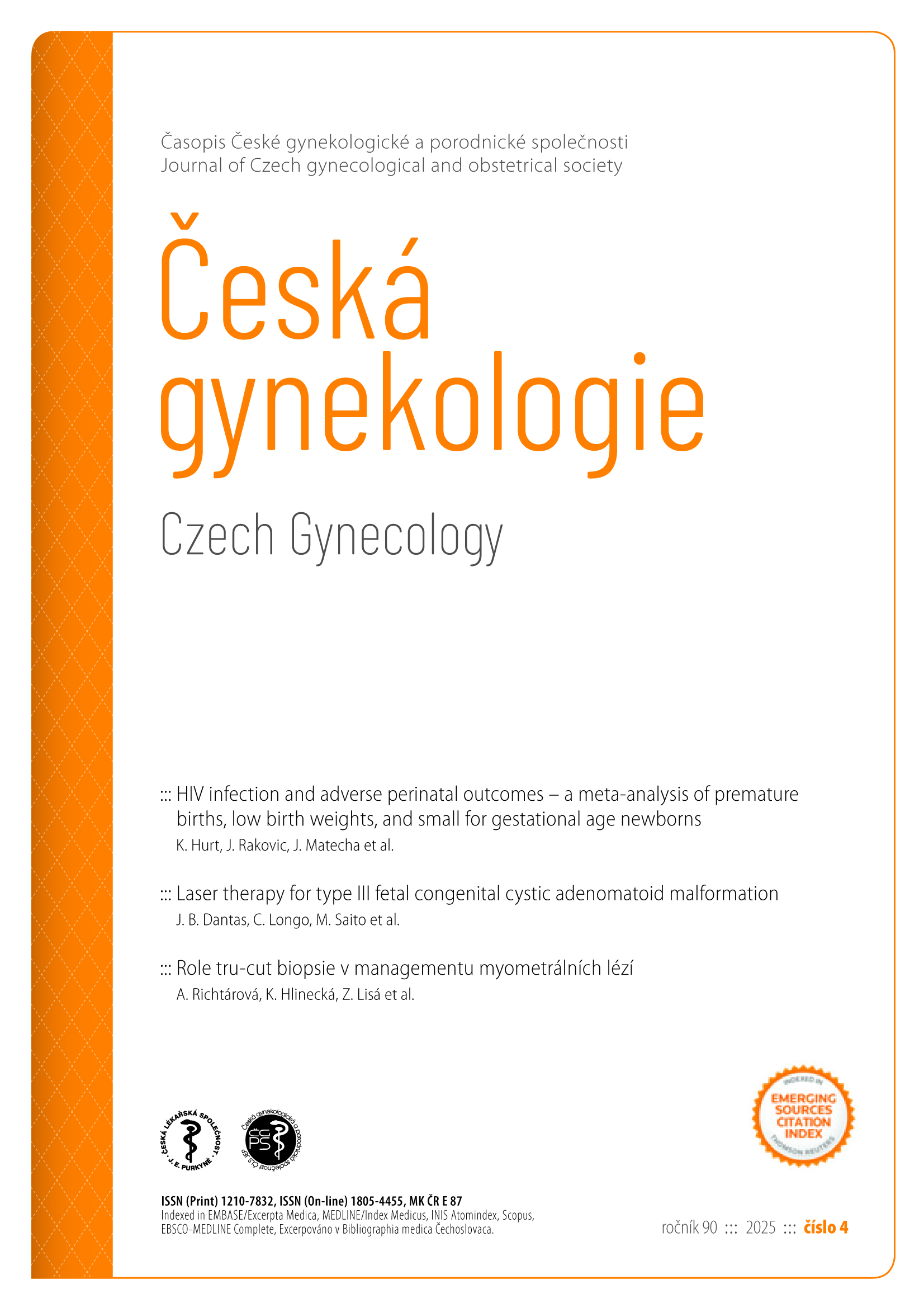HIV infection and adverse perinatal outcomes – a meta-analysis of premature births, low birth weights, and small for gestational age newborns
HIV infection and adverse perinatal outcomes – a meta-analysis
Keywords:
HIV, preterm birth, antiretroviral therapy, low birth weight, small for gestational age, meta-analysisAbstract
Summary: HIV remains a significant global public health challenge, affecting millions of individuals with a disproportionate burden in sub-Saharan Africa. Despite advancements in antiretroviral therapy (ART) and global efforts to control transmission, the impact of HIV on pregnancy outcomes remains a topic of concern. Aim: This study aims to evaluate the association between maternal HIV infection and adverse pregnancy outcomes, specifically preterm birth (PTB), low birth weight (LBW), and small for gestational age (SGA) infants through a comprehensive meta-analysis. Materials and methods: A systematic search of English-language databases, including Medline, Web of Science, Ovid, Scopus, and Google Scholar, was conducted to identify relevant studies published between 2014 and 2024. Eligible studies included retrospective and prospective cohort studies with well-defined control groups of HIV-negative mothers. Studies that lacked appropriate control groups, included multiple pregnancies, or did not report adjusted statistical outcomes were excluded. A total of eight studies met the inclusion criteria for PTB analysis, five studies for LBW analysis, and five studies were selected for SGA analysis. Results: Meta-analysis using a random-effects model demonstrated a statistically significant association between maternal HIV infection and PTB (OR = 1.55; 95% CI 1.38–1.74; p < 0.001), LBW (OR = 1.57; 95% CI 1.24–1.98; p < 0.001), and an increased risk of SGA (OR = 1.24; 95% CI 1.10–1.40; p < 0.001). Heterogeneity was moderate for PTB (I² = 38.2%) and LBW (I² = 55.9%) while it was low for SGA (I² = 7.6%), indicating consistency across studies. Egger’s test showed minimal publication bias. Discussion: These findings highlight the adverse effects of HIV on pregnancy outcomes, emphasizing the need for continued monitoring and optimization of ART regimens to mitigate risks. Further research is warranted to explore the influence of different ART combinations and immune system dynamics on fetal development.


